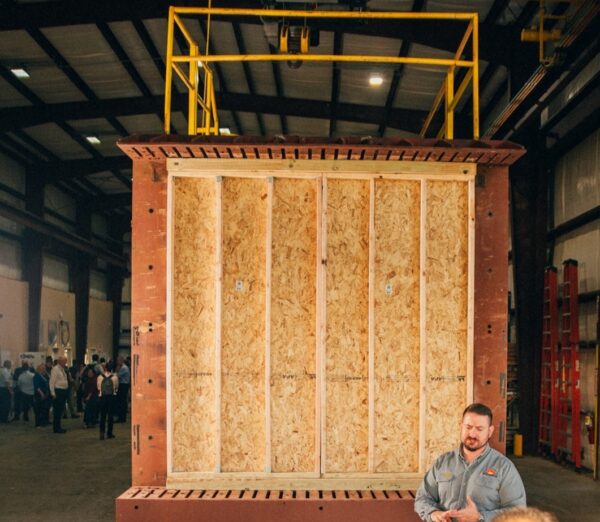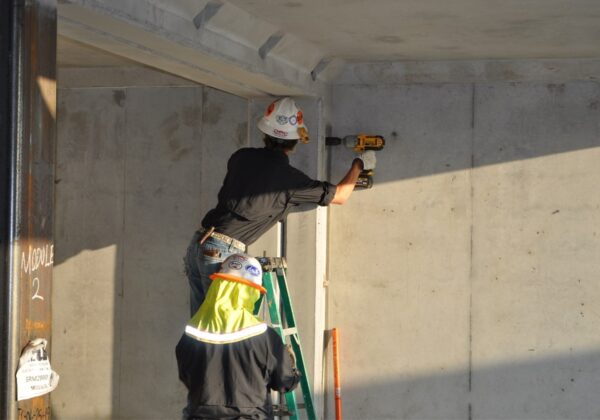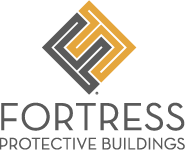Key Differences Between Tilt-Up, Cast-In-Place, & Precast Concrete Construction

Why precast concrete construction is the ideal choice for modern protective buildings
Protective buildings perform vital functions at industrial worksites and other potentially hazardous locations. These critical structures serve as safety shelters for site personnel due to their high hazard resistance and overall strength. Protective buildings can also keep important equipment or control centers secure in the event of an emergency.
But the overall effectiveness and suitability of concrete protective buildings are affected by their construction methods. Construction methods can also impact building installation times, design options, and other major factors.
Site managers and other executives need to know the major differences between tilt-up, cast-in-place, and precast concrete construction methods so they can choose the right construction type for their needs.
What is tilt-up concrete construction?
Tilt-up concrete construction involves pouring concrete into pre-defined shapes at a building’s installation site, then allowing the concrete to cure. Once finished, the panels are lifted into their final positions using cranes and other machinery.
This type of concrete construction can be advantageous in some situations. For instance, it eliminates the need for full-size concrete piece transportation.
Cast-in-place concrete construction explained
Cast-in-place concrete construction, sometimes called site-cast concrete construction, involves pouring and curing concrete into structures or building elements at a construction site. Cast-in-place concrete buildings are constructed at their final destinations.
Cast-in-place concrete can be beneficial for specific needs, such as when creating foundations or very large, difficult-to-transport concrete components/structures.
What is precast concrete construction?
Precast concrete construction involves creating concrete elements and/or buildings off-site, then transferring completed concrete structures or pieces to their final destinations. Precast concrete can be used to create individual walls, beams, columns, and other structural elements. Or it can be used to make monolithic building modules, ready to go once they're delivered to a worksite and joined together.
Precast concrete production benefits from several key advantages. For example, precast concrete components or full structures can be created for a wider range of worksites, as each cast is cured in a controlled environment without having to account for bad weather. Furthermore, precast concrete structures can be bolstered by steel reinforcements and other materials.

Differences between each concrete construction method
Every concrete construction method follows different design and building procedures. These differences can help worksite executives and managers determine which method is best for their needs.
Installation time
Each method of concrete construction requires different installation timelines and schedules. Tilt-up and cast-in-place concrete buildings must take weather projections into account. When the temperature drops below freezing at a worksite, the concrete curing process is often affected.
Precast concrete construction requires builders to incorporate design and shipping times into their schedules. On the plus side, precast concrete components or entire structures are cast in a quality-controlled environment ready for use upon delivery to the workplace.
Installation location
Site managers should also consider installation location differences between each concrete construction method. Site-cast and tilt-up concrete construction require managers to set aside adequate space for the concrete pouring and curing process. But since site-cast and tilt-up concrete buildings are created at their final locations, these methods may allow for the construction of unorthodox concrete shapes or larger-than-average structures.
Precast concrete structures and building elements are created off-site, then can be installed in areas that can be reached via trucks or cranes. While this can be limiting in some situations, it can also be accounted for beforehand.
Design flexibility
Tilt-up and cast-in-place concrete buildings may allow for more design flexibility in terms of their shapes or product functions. For example, a concrete construction crew could theoretically cast and cure a concrete structure of any shape using the cast-in-place technique, provided they have enough space to complete the job.
Precast concrete construction delivers complete, ready-to-go precast concrete buildings or elements to worksites. Many precast concrete building manufacturers offer several building variations or design layouts with options for customization based on required inclusions.
Strength and weather resilience
In many cases, precast concrete is designed to offer greater hazard resistance, weather resilience, and overall strength compared to cast-in-place or tilt-up concrete structures. This is due, in part, to the fact that precast concrete structures can be designed and cast without weaknesses in building joints and connections.
Furthermore, precast concrete structures benefit from a quality-controlled curing processes, ensuring that their concrete cures and sets under the ideal conditions for maximum strength. Organizations such as FORTRESS also stress-test precast concrete structures before delivery.

Quality control
Site managers should consider quality control before selecting one method of concrete construction over another. Cast-in-place and tilt-up concrete construction require casters to account for temperature changes, weather, humidity levels, potential contaminants, and other factors. This can make quality control harder than other considerations.
Precast concrete allows for better quality control and a consistent finished product when it is cast in a controlled environment. Since the concrete creation process is supervised and not subject to the same external impacts as outdoor casting, precast concrete buildings benefit from high-quality control standards, leading to greater hazard resistance and similar advantages
What are the advantages of precast construction?
While each method has its benefits and downsides, the advantages of precast concrete construction make it a superior choice for many worksites or projects. These advantages include:
- High hazard/weather resistance and concrete strength
- Control of environmental factors combined with a rigorous quality assurance program led to a consistent high-quality finished product
- Fast installation/delivery times
- Concrete structures are ready for immediate fit out upon delivery
For these reasons and more, FORTRESS Protective Buildings are always constructed from reinforced precast concrete using Tindall’s high-quality casting process. Our durable, resilient protective buildings are ideal for all worksites. Featuring customizable designs to meet function and available in a wide range of floorplans, each blast-resistant building can be tailored to fit unique needs and ensure maximum occupant comfort.
Want to know more, or want to discover how FORTRESS can improve your facility’s safety? Contact us today.

